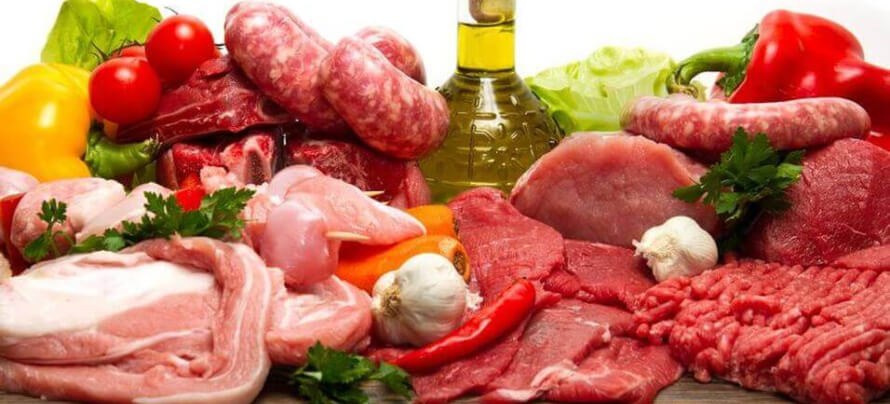Key Takeaways
- The military diet involves following a very strict meal plan that provides roughly 1,000 calories per day for three days per week, followed by four days of eating 1,500 calories per day.
- You can lose 10+ pounds in a week following the military diet, but most of that will be water weight that will quickly return once you resume your normal eating habits, and you’ll likely lose muscle as well.
- If you want to lose fat as fast as possible without crash dieting, losing muscle, or struggling through hunger, cravings, and low energy on the military diet, follow the five steps at the end of this article.
The military diet has developed something of a cult following online.
Unlike more mainstream weight loss diets like the ketogenic diet, carnivore diet, and detox diets, there’s remarkably little information on the military diet.
It seems to have arisen from the bowels of the Internet around mid-2012, but exactly where it came from and who created it is a total mystery, even to the proponents.
Go clicking for answers and you’ll quickly glean a few facts about this diet:
- It revolves around eating a very strict meal plan of specific foods for three days per week, and then eating a low-calorie but relatively normal diet the other four days of the week.
- It’s billed as the “secret” diet used by the military to get new recruits in fighting shape, as well as by actors, models, and other celebrities to drop weight as quickly as possible.
- If you follow the diet to a T, you can expect to lose up to 10 pounds in 7 days, according to the proponents.
Aside from the basic military diet meal plan and eating schedule (which we’ll go over in a moment), there’s no official military diet and the recommendations and rules vary based on who you ask.
Furthermore, there’s no fitness guru claiming credit for the military diet.
There’s no diet book promoting its eating principles.
There’s no official website on the diet and the main argument thrown around in its favor is the rumor that Khloe Kardashian used it to lose weight . . . at some point . . . maybe.
Despite this dubious track record, it’s still wildly popular, as evidenced by the 150,000 people who search for it every month online.
Some of the appeal is understandable, too.
Like many weight loss diets it has an attractive schtick:
- You only have to follow the military diet meal plan 3 days per week.
- You can still enjoy some normal foods while following the diet.
- You don’t have to follow the diet forever to lose weight.
- You can lose “up to 10 pounds per week.”
- You don’t have to exercise.
What are the downsides, then?
For starters, the meal plan you’re supposed to follow looks like the diet of a famished racoon rooting through a restaurant dumpster.
There’s no rhyme or reason to any of the food choices, and it’s almost as if someone threw them together purely to troll people who don’t know any better.
For example, dinner on the third day of the diet is 1 cup of tuna, ½ a banana, and 1 cup of vanilla ice cream.
The meals are also designed to provide no more than 1,000 calories per day for the first 3 days of the diet, and the other 4 days of the week you’re allowed no more than 1,500 calories.
If you aren’t familiar with what 1,500 calories looks like, that’s very little food—about half as much as most people eat.
That being what it is, there’s a groundswell of dieters eager to learn more about the military diet and plenty of vloggers, influencers, and other bush-league diet gurus happy to spread the gospel.
You probably know enough about dieting, though, to be skeptical. In fact, I’ll wager a hotdog and half cup of vanilla ice cream that you have a lot of questions about the military diet, such as . . .
- Why is it called the military diet?
- What are you supposed to eat on the military diet?
- Will the military diet actually help me lose 10 pounds of fat in a week?
- And more.
You’ll learn the answers to all of these questions and more in this article.
Let’s get started.
(Or if you’d prefer to skip all of the scientific mumbo jumbo, and you just want to know how many calories, how much of each macronutrient, and which foods you should eat to reach your health and fitness goals, no problem! Just take the Legion Diet Quiz, and in less than a minute, you’ll know exactly what diet is right for you. Click here to check it out.)
Want to listen to more stuff like this? Check out my podcast!
What Is the Military Diet?

There’s no official definition of what the military diet is, but the three main principles most adherents abide by are:
- You follow a specific meal plan of military diet-approved foods for the first three days of the diet (it’s also referred to as the 3-day diet).
- You eat whatever you want the other four days per week as long as you don’t eat more than 1,500 calories.
- You follow the diet long enough to reach your desired weight, and no longer.
You can exercise while following the military diet but it’s not required. If you do exercise, then most proponents recommend you stick with walking.
The most common promise associated with the military diet is that it can help you lose 10 pounds in 7 days—a relatively common benchmark used by many crash diets (Google “grapefruit diet” and you’ll see the same claim).
When it comes to the name, no one is exactly sure where the “military” part of the military diet came from. It’s also been referred to as the “army diet” and “navy diet,” although no one offers any explanation as to why.
A few theories include:
- It really did originate in the military to help troops get in shape (highly unlikely).
- It’s tough, like the military, so the “military” moniker fits the diet (possible).
- It’s just a marketing gimmick (most likely).
The U.S. Army doesn’t promote any particular diet and has never endorsed the military diet, and neither has any other branch of the U.S. military. The military diet can’t be traced back to any other military in the world, either.
It’s also more or less impossible to follow this diet if you’re in the military, since most of the foods aren’t going to be on the same menu at the same time.
The most likely explanation is that the term “military” was attached to this diet to lend it credibility and acceptability.
Saying something is used by or made for the military, whether it’s backpacks, watches, sunglasses, or flashlights, is a common marketing ploy used to lend prestige to products and ideas.
Many people also associate soldiers with being fit, lean, and tough, qualities most people would like to possess, which has fueled interest in the training techniques, daily routines, and diets of servicemen.
The most likely explanation of where the name “military diet” came from is simply that the creator(s) wanted to capitalize on the growing interest in all things military.
When it comes to the specifics of the diet, it’s quite similar to other crash diets in that you’re forced to eat few calories by default rather than deliberate planning.
That is, instead of calculating how many calories you should eat every day to cause consistent, steady weight loss, you give yourself a laundry list of restrictions that make it impossible not to be in a steep calorie deficit.
What makes the military diet unique from other diets like the ketogenic diet, carnivore diet, or low-carb diet, is the peculiar meal plan you’re supposed to follow.
Here’s what the military diet meal plan looks like:
Military Diet Menu Day One
Breakfast
½ grapefruit (52 calories)
1 slice of toast (82 calories)
2 tablespoons of peanut butter (188 calories)
1 cup of black caffeinated coffee or caffeinated tea (5 calories)
Total Calories: 327
Lunch
½ cup of tuna (124 calories)
1 slice of toast (82 calories)
1 cup of black caffeinated coffee or caffeinated tea (5 calories)
Total Calories: 211
Dinner
3 ounces of any lean meat (140 calories)
1 cup of green beans (31 calories)
1 small apple (78 calories)
1 cup of vanilla ice cream (274 calories)
Total Calories: 523
Total Calories for Day One: 1061
Military Diet Menu Day Two
Breakfast
1 egg (78 calories)
1 slice of toast (82 calories)
½ banana (60 calories)
Total Calories: 220
Lunch
1 cup of cottage cheese (222 calories)
1 hard boiled egg (78 calories)
5 saltine crackers (65 calories)
Total Calories: 365
Dinner
2 plain hot dogs (302 calories)
1 cup broccoli (30 calories)
½ cup of carrots (26 calories)
½ banana (60 calories)
½ cup vanilla ice cream (137 calories)
Total Calories: 555
Total Calories for Day Two: 1140
Military Diet Menu Day Three
Breakfast
5 saltine crackers (65 calories)
1 slice of cheddar cheese (113 calories)
1 small apple (78 calories)
Total Calories: 256
Lunch
1 egg (cooked however you like) (78 calories)
1 slice of toast (82 calories)
Total Calories: 160
Dinner
1 cup of tuna (248 calories)
½ banana (60 calories)
1 cup of vanilla ice cream (274 calories)
Total Calories: 582
Total Calories for Day Three: 998
After you finish your 3-day tour of duty on the military diet, you get to eat whatever you want the other four days of the week so long as you don’t eat more than 1,500 calories per day.
The rationale for this eccentric meal plan changes based on what military diet website you happen to stumble upon.
Some proponents claim this particular combination of foods helps speed up your metabolism or prevent it from decreasing, keeping you out of “starvation mode.”
Others say these foods were chosen to minimize hunger and cravings while on the diet.
Others offer no explanation and urge you to follow the plan because that’s what “works.” If it ain’t broke, don’t fix it, and all of that.
Why Do People Follow the Military Diet?

The only reason people follow the military diet is to lose weight as fast as possible.
Most of the people who follow the military diet are fairly upfront about this fact, too.
For example, here’s the top comment on a popular video about the military diet:

Fair enough.
It’s a crash diet, pure and simple.
The main promise of the military diet is that it can help you lose 10 pounds in 7 days (or 3 days, depending on how optimistic you are), an attractive offer if you’re overweight and desperate to get skinnier.
Unlike water fasting, detox diets, and other crash diets that are dressed up as health cleanses, people who follow the military diet seem to know what they’re getting themselves into.
The first three days are more or less just self-imposed starvation, and the next four days are for giving you a mental break while keeping you in a calorie deficit to continue losing weight. Then, you simply repeat the process until the scale reaches your desired number.
And if all you care about is scale weight, then the military diet will help.
Will the Military Diet Help You Lose Weight?
Yes.
If you know anything about how your metabolism works, you know that if you slash your calories for a few days, you’re going to lose weight.
Does the military diet deliver on its promise to help you lose 10 pounds in 7 days, though?
It could, depending on how much you weigh and what you normally eat (more on this in a moment).
Finally, the most important question: How much of those 10 pounds is going to be body fat?
The answer: Not nearly as much as you’d like.
To understand why this is, you have to understand how dieting works on the whole.
Any diet that involves drastically reducing your calorie intake for a few days or weeks is going to result in rapid weight loss.
If you’re a regular here, you know that if you want to lose fat, you must eat less energy than you burn, and no pill, powder, or special meal plan can change this.
If you’re not regularly eating fewer calories (energy) than you’re burning, no meaningful weight loss can occur.
In other words, weight loss does boil down to “calories in vs. calories out.”
If you’re still skeptical of this idea, you may want to consider these questions:
Why has every single controlled weight loss study conducted in the last 100 years . . . including countless meta-analyses and systematic reviews . . . concluded that meaningful weight loss requires energy expenditure to exceed energy intake?
Why have bodybuilders dating back just as far . . . from Sandow to Reeves to Schwarzenegger . . . been using this knowledge to systematically and routinely control body fat levels?
And why do new brands of “calorie denying” come and go every year, failing to gain acceptance in the weight loss literature?
Well, here’s the simple answer:
A century of metabolic research has proven, beyond the shadow of a doubt, that energy balance, operating according to the first law of thermodynamics, is the basic mechanism that regulates body weight.
The particular meal plan you use to maintain a negative energy balance doesn’t matter when it comes to weight loss. Eat fewer calories than you burn for a few months of any food you like, and the scale will go down. No exercise required.
So, from a pure weight loss perspective, the military diet will get the job done.
The problem is that you’re probably not going to be happy with the result.
The main side effects you’re going to run into on the military diet are:
- Muscle loss, which leads to the dreaded “skinny fat” look.
- Hunger and cravings, which inevitably lead to overeating or outright bingeing down the road.
- Mood and energy swings, which make losing weight far harder than it needs to be.
- Loss of strength and a drop in performance in the gym, which is going to further accelerate muscle loss.
- Social awkwardness at meals for the obvious reasons, which also makes dieting more difficult than necessary.
Let’s say you’re like our YouTube commenter referenced above—you don’t give a damn about any of that so long as that scale is telling you what you want to hear.
There’s a problem with this approach, too: Most of the weight you lose on the military diet isn’t fat.
You see, when you cut your calorie (and especially your carb) intake, as you do on the military diet, there’s a rapid drop in your whole-body glycogen stores. Glycogen is a form of carbohydrate that’s stored in muscle and liver tissue, and when you cut down your calorie intake, glycogen levels plummet.
That will cause a small drop in body weight by itself, but here’s why you see such big swings:
Every gram of glycogen is stored with about 3 grams of water. The average man can store 15 grams of glycogen per kilogram of body weight, and regular exercise also increases the glycogen storage capacity of muscle.
So, when you do the math you can see how this could cause rapid, but fleeting, weight loss.
Here’s an example. I weigh 175 pounds (80 kilograms), lift weights regularly, and eat a high(ish)-carb diet (~1 to 2 grams per pound most days).
If I were to maximize my carb intake with a few days of refeeding, my body could store close to 1,200 grams of carbohydrate. For argument’s sake, though, let’s say it’s holding more like 800 grams of glycogen, which means I’m also carrying an additional 2,400 grams of water.
All told, that’s about 3.2 kilograms of extra body weight, or around 7 pounds.
And if I were to slash my calorie and carb intake, I could lose that much in a few days.
If that weren’t enough, simply having food in your digestive tract can add several pounds to your total body weight as well, particularly fiber-rich foods like fruits and vegetables. When you significantly curtail your calorie intake you lose this additional food weight as well.
Finally, restricting your calories in this way will likely result in a pound or two of fat loss for most people, depending on their size and activity levels.
Assuming I lose 7 pounds simply by eating fewer carbs, another 3 to 5 pounds from food weight, and a pound or two of fat, that’s 12 to 14 pounds that I could lose in a matter of days.
This kind of rapid weight loss can be gratifying in the short-term, but it doesn’t mean this style of dieting is going to give you the body you want.
Here’s the problem with the military diet and other crash diets:
You will lose some fat, but most of the weight you lose during your fast is going to be water weight, and it will come right back when you start eating normally again.
As soon as you increase your calorie, and especially your carb intake, you’re going to gain weight just as fast as you lost it.
That’s disheartening in and of itself, but the bigger issue is what this does to your body composition over time.
Every time you embark on another bout of military dieting, you’re going to lose some muscle.
It’s hard to say exactly how much, but what we can say is that the more times you repeat this cycle, the more muscle you’re going to lose.
The longer you remain in an extreme calorie deficit, the more muscle you’re going to lose, and this is made even worse if you aren’t lifting weights or eating enough protein.
Why is this the case?
You Can’t Lose 10 Pounds of Fat Per Week

There’s a limit to how much fat your body can metabolize (burn) per day before it starts breaking down greater and greater amounts of muscle for energy.
This is something bodybuilders have known for decades, but a recent study conducted by a scientist at the University of New Mexico sheds light on exactly how fast you can lose fat before you start losing appreciable amounts of muscle.
The researcher parsed through data from previous studies that involved people in a calorie deficit who’s body composition was also measured. Using several different mathematical models, he then compared how much fat and muscle the people lost compared to the size of their calorie deficit.
Based on his analysis, he found what he believes to be a maximal threshold of calories that the body can extract from body fat per day: 30 calories per pound of body fat per day.
We can use this formula to find how many pounds of fat you can lose per week before you start losing muscle.
First, find your body fat percentage. I’ll use myself as an example.
I’m 175 pounds and based on the guidelines in this article, I’m about 12% body fat.
Next, find how much total body fat you have.
To find this number, multiply your weight by your body fat percentage as a decimal.
175 x 0.12 = 21 pounds of body fat.
Next, multiply your total fat mass in pounds by 30 to find how many calories of fat you can conceivably lose per day before you start to lose muscle.
21 x 30 = 630
That means I can realistically maintain a daily calorie deficit of about 630 calories per day without losing muscle.
To find how many pounds of fat I could realistically lose per week, I would multiply the daily calorie deficit by 7.
630 x 7 = 4,410
Then I would divide 4,410 by 3,500 (roughly the number of calories in a pound of body fat) to find how many pounds of body fat I could lose per week.
4,410 / 3,500 = 1.25 (which we can round to 1.3 pounds of fat).
This means that I could expect to lose at most 1.3 pounds of body fat per week before I started losing significant amounts of muscle.
So, how could I lose 10 pounds of fat per week following the military diet?
I couldn’t—it’s physically impossible.
Even if I “let myself go” and doubled my body fat percentage, the maximum I could hope to lose per week to get back to my current physique would be about 2.5 pounds of fat per week.
The bottom line is that in my case, any weight lost beyond 1 to 2 pounds per week would either come from glycogen, water, food, or muscle, but not fat.
This neat little formula also explains why extremely fat people are able to lose 3, 4, or even 5 pounds of fat per week.
In some cases they’re carrying over 100 pounds of body fat, which means they can sustain calorie deficits much greater than lean, normal people without losing significant amounts of muscle.
For example, if someone is carrying 100 pounds of body fat, they could conceivably maintain a daily calorie deficit of 3,000 calories per day, or around 6 pounds of fat per week. (At this point, though, it may be difficult to consume enough protein or stick to the diet, so this isn’t necessarily ideal, either).
The problems with the military diet don’t end with simply losing muscle, though.
You Can’t Stick to the Military Diet

The most glaring issue with following the military diet hunger.
It’s easy to tell yourself that you’ll suck it up. You’ve been hungry before, so you can hack it for a few days.
That’s what everyone says, and that attitude usually comes back to bite them in the end.
How?
Nine times out of ten, forays into extreme calorie restriction end in a massive binge where you gain back all of the fat you lost and then some. At the very least, you’ll wipe out the progress you’ve made, leaving you more frustrated, defeated, and fat than ever.
This isn’t something Youtubers, fitness gurus, or social media “influencers” like to talk about, but it’s a hard reality of extreme calorie restriction.
When you cut your calories low enough for long enough, all you’re going to want to do at the end of that period is stuff your face with as many goodies as you can.
This is known as dietary “disinhibition,” and it’s a major risk factor for weight regain, eating disorders, and a preoccupation with food that can follow you for months or years.
This is such a common and destructive eating pattern that researchers have a name for it, too: post-starvation hyperphagia.
In simple terms, this is an all-consuming desire to consume as many calories as possible, which more or less always results in gaining even more fat than you lost while crash dieting.
Starving yourself too hard to lose weight in the short term (typically to no avail), can make it harder to stick to future diets in the long run, which is what really moves the needle when it comes to getting the body you want.
And that explains why most of the people promoting the military diet constantly struggle to maintain a healthy weight.
For example, here’s what the about page says on a popular military diet website:
I’m not skinny, even though I run the official Military Diet site. I have a Body Mass Index of 23, at the top end of the normal category. For the past 15 years, my weight seems to fluctuate up and down by about 20 pounds.
Is this really who you want to be taking diet advice from?
Hard pass for me.
The bottom line is that the military diet will help you lose weight, a little of it will be fat, most of it is going to be water, and some of it will be muscle.
And when it’s all said and done, chances are good that you’ll have gained back the modicum of fat you lost and then some.
Repeat this process over and over—starving yourself, losing some muscle and fat, and then going back to your normal eating habits, and over time you’ll take on that amorphous “skinny fat” look.
For example, would you rather look like this gal, who follows the military diet . . .
Or these gals, who followed the (much easier) diet and exercise guidelines I’m about to show you below?



It took these women 3 to 12 months to transform their bodies, but they also . . .
- Enjoyed the entire process from start to finish.
- Built muscle and got stronger on nearly every exercise.
- Kept the weight off and still love how they look.
What’s more, they’re just three examples of hundreds of women who’ve sent us success stories after following the methods you’re about to learn.
If you’d like to learn what they did and how you can achieve the same thing with your body, keep reading.
The Best Way to Lose Weight Fast
Losing weight fast is really easy.
Eat as little food and do as much cardio as you can for the next month or two, and voila, the pounds fall off.
You may be disappointed in the end, though, even if you can suffer through it.
Why?
You’re going to like what you see on the scale but not in the mirror. You may not look as fat as before, but you’re going to look more skinny fat, and that’s not the goal.
You see, the standard “starve yourself skinny” approach to dieting burns fat, but it also burns muscle, and with it goes your muscle tone and definition.
Combine that with the vicious “rebound” effect we just discussed, and you have a recipe for losing muscle and building fat over time.
That’s why your goal shouldn’t be to “lose weight,” but to “lose fat and not muscle,” and that’s what all of the women I just showed you a moment ago did. It’s also easier than you might think. There are just five steps:
- Use an aggressive (but not reckless) calorie deficit.
- Eat a high-protein diet.
- Do a lot of heavy compound weightlifting.
- Use high-intensity interval training to burn fat faster.
- Take fat loss supplements that actually work.
Let’s go over each.
1. Use an aggressive (but not reckless) caloric deficit.
Studies show that the only way to lose a significant amount of fat is to eat fewer calories (less energy) than you burn.
You see, the reason you’re carrying excess body fat is, over time, you consistently ate more calories than you burned. And the only way to get rid of that excess fat is to do the opposite: eat less than you burn.
When you do this, you’re in a “calorie deficit” because your energy intake is falling short of your body’s needs. It must get that additional energy from somewhere, though, and its go-to is fat stores.
Now, the larger the caloric deficit, the faster the weight loss, but if you make it too large (by eating too little), you’re going to run into various problems related to “starvation dieting.”
We want to avoid that, but we also want to push the envelope as much as we can. That is, we want to be aggressive in our fat loss efforts, but not reckless.
And that’s why I recommend that you set your calorie deficit at 20 to 25% (eat 20 to 25% fewer calories than you burn every day).
Research shows that this will allow you to lose fat rapidly without losing muscle.
If you follow the rest of the steps in this article, you also shouldn’t run into much in the way of hunger or cravings, either.
Sure, you might feel twinges now and then, but nothing like what most people associate with “dieting” and definitely not what you’ll experience on the military diet.
(And again, if you feel confused about how many calories, how much of each macronutrient, and which foods you should eat to reach your goals, take the Legion Diet Quiz to learn exactly what diet is right for you.)
2. Eat a high-protein diet.

When we’re talking body composition, protein is the most important macronutrient by a long shot.
Studies show that eating adequate protein helps you . . .
- Gain muscle and lose fat faster.
- Recover faster from your workouts.
- Retain muscle better while restricting your calories for weight loss.
- Feel more satiated by your meals (and thus be less likely to overeat).
The bottom line is high-protein dieting beats low-protein in every way, and especially when you’re cutting.
So, what’s the right amount of protein then?
Well, when you’re looking to lose fat, then you should eat about 1 gram of protein per pound of body weight per day.
And if you’re very overweight (25%+ body fat in men and 30%+ in women), then this can be simplified to 40% of your total calories per day.
Want to know more about how much protein you should eat? Check out this article:
How Much Protein Do I Need? The Definitive (and Science-Based) Answer
3. Do a lot of heavy compound weightlifting.
There are many ways to train your muscles, and when the goal is gaining muscle definition as quickly as possible, nothing beats heavy compound weightlifting.
It’s better than workout machines, “pump” classes, bodyweight exercises, Yoga, Pilates, and everything else you can do to develop your muscles.
What do I mean by “heavy compound” lifting, though?
By “compound,” I mean focusing on compound exercises, which are those that target multiple large muscle groups, such as the squat, bench press, military press, and deadlift.
And by “heavy,” I mean lifting weights that are above 75% of your one-rep max (weights that you can do 12 reps or less with before reaching failure).
The main reason heavy compound weightlifting is so effective is it’s the best way to overload your muscles, which is the primary trigger for muscle growth.
By lifting heavy weights (and progressing to heavier and heavier weights as you get stronger), you create tremendous amounts of tension in your muscles, and this tells them to grow.
I think you can figure out how this benefits you when you’re restricting your calories for fat loss.
In short, it allows you to minimize muscle loss while dieting, or, depending on your circumstances, even gain muscle while you’re losing fat.
Want to know how to build an effective weightlifting routine? Check out this article.
The Definitive Guide to Strength Training: How to Get Strong…Fast
4. Use high-intensity interval training to burn fat faster.
High-intensity interval training (HIIT) is a type of cardio that involves short, maximum effort sprints, followed by short periods of recovery.
I’m a big fan of HIIT for several reasons, but the main one is it allows you to lose more fat in less time than traditional slow steady-state cardio.
In fact, research shows that you can burn as much fat in 25 minutes of HIIT as 60 minutes of incline treadmill walking.
Another major benefit of HIIT is that it helps preserve muscle better than low-intensity cardio, mainly because you don’t have to do nearly as much to keep the needle moving.
To be specific, just 2 to 4 HIIT workouts per week, with each lasting just 20 to 25 minutes, is all you need to significantly boost your fat loss.
Yup, you really can lose weight fast doing no more than an hour or so of cardio per week!
Want to learn more about high-intensity interval training? Check out this article.
The Top 3 Reasons to Do High-Intensity Interval Training (HIIT)
5. Take supplements proven to accelerate fat loss.

Here’s a dirty little secret of the supplement industry:
99% of what you see, hear, and read about fat loss supplements is pure blarney.
You can read this article to learn why, but some of the worst offenders include Garcinia cambogia, green coffee bean extract, and raspberry ketones. And others, like Hoodia, have even turned out to be toxic.
So if you’re skeptical of fat loss supplements, I understand.
That said, there are safe, natural compounds that do effectively speed up fat loss. When you combine the right supplements with a proper diet and exercise routine like you just learned about, you dramatically speed up the process.
Here are the top three fat loss supplements that actually work:
3 to 6 mg of caffeine per kilogram of body weight per day.
As weight loss boils down to energy consumed versus energy expended, caffeine helps you lose fat by increasing your body’s daily energy expenditure.
Caffeine also improves strength, muscle endurance, and anaerobic performance, and also reverses the “morning weakness” experienced by many weightlifters.
Part of maximizing the fat loss benefits of caffeine is preventing your body from building up too much of a tolerance, however. The best way to do this is to limit intake, of course.
Here’s what I recommend:
- Before training, supplement with 3 to 6 mg caffeine per kg of body weight. If you’re not sure of your caffeine sensitivity, start with 3 mg/kg and work up from there.
- Keep your daily intake at or below 6 mg per kg of body weight. Don’t have 6 mg/kg before training and then drink a couple of coffees throughout the day.
- Include 1 to 2 low-caffeine days per week, and 1 no-caffeine day per week. A low day should be half your normal intake, and a no day means less than 50 mg of caffeine (you can have a cup or two of tea, but no coffee, energy drinks, caffeine pills, etc.).
Personally, I get my caffeine from Legion’s pre-workout Pulse, which contains 350 mg of caffeine per serving along with clinically effective dosages of 5 other ingredients scientifically proven to improve workout performance:
- Beta-Alanine. Beta-alanine is a naturally occurring amino acid that reduces exercise-induced fatigue, improves anaerobic exercise capacity, and can accelerate muscle growth.
- Citrulline Malate. Citrulline is an amino acid that improves muscle endurance, relieves muscle soreness, and improves aerobic performance.
- Betaine. Betaine is a compound found in plants like beets that improves muscle endurance, and increases strength.
- Ornithine. Ornithine is an amino acid found in high amounts in dairy and meat that reduces fatigue in prolonged exercise and promotes lipid oxidation (the burning of fat for energy as opposed to carbohydrate or glycogen).
- Theanine. Theanine is an amino acid found primarily in tea that reduces the effects of mental and physical stress, increases the production of nitric oxide, which improves blood flow, and improves alertness, focus, attention, memory, mental task performance, and mood.
And what you won’t find in Pulse is equally special:
- No artificial sweeteners or flavors.
- No artificial food dyes.
- No unnecessary fillers, carbohydrate powders, or junk ingredients.
The bottom line is if you want to know what a pre-workout is supposed to feel like . . . if you want to experience the type of energy rush and performance boost that only clinically effective dosages of scientifically validated ingredients can deliver . . . you want to try Pulse.
0.1 to 0.2 milligrams of yohimbine per kilogram of body weight before training.
Yohimbine is a natural substance that increases fat loss, and is particularly helpful with losing “stubborn” fat in the belly, hip, and thigh regions.
There’s a catch, though.
Studies show that yohimbine only works when insulin levels are lowest. And that means it can only help you lose fat faster if you train in a fasted state.
In terms of a specific yohimbine supplement to take, I recommend you check out Legion’s pre-workout fat burner Forge today.
Every serving contains clinically effective doses of yohimbine, HMB, and CDP-choline, which help you burn stubborn fat faster, preserve your muscle, and have better workouts.
1 to 2 servings of my fat burner Phoenix per day.
Phoenix is a fat burner that Legion developed that contains seven natural compounds proven help you lose fat faster, including synephrine, green tea extract, and forskolin.
The bottom line is if you want to lose fat faster without taking a bunch of stimulants or harsh chemicals, you want to try Phoenix today.
The Bottom Line on the Military Diet
The military diet revolves around eating a very strict meal plan of specific foods for three days per week, and then eating a low-calorie but relatively normal diet the other four days of the week.
If you follow the military diet, proponents claim, then you can expect to lose up to 10 pounds in 7 days.
There isn’t a single branch of the military anywhere, in any country, that recommends this diet. The name is just a marketing gimmick.
The military diet is a highly structured crash diet.
You starve yourself for three days per week, eat whatever you want but no more than 1,500 calories per day the other four days per week, and repeat until you’ve reached your desired weight (in theory).
The military diet can help you lose a lot of weight very fast, but chances are good you won’t be happy with the result.
It’s physically impossible for most people to lose more than 1 to 2 pounds per week, and even the heaviest among us can only hope to lose 3 or maybe 4 pounds of body fat per week.
For most people who are 10 to 30% (men) or 20 to 40% body fat (women), the best you can achieve is 1 to 2 pounds of fat loss per week before you start losing a considerable amount of muscle.
Most of the weight you’ll lose on the military diet is glycogen, water, and food weight, a few pounds will be fat, and some of it will be muscle.
Nine times out of ten, forays into extreme calorie restriction like the military diet ends in a massive binge where you gain back all of the fat you lost and then some. These kinds of crash diets simply aren’t going to help you maintain the body you want over the long term.
If you want to lose fat as fast as possible without losing muscle, here’s what you should do instead:
- Use an aggressive (but not reckless) calorie deficit.
- Eat a high-protein diet.
- Do a lot of heavy compound weightlifting.
- Use high-intensity interval training to burn fat faster.
- Take fat loss supplements that actually work.
Stick to those five steps, and you’ll build a body you can be proud of.
So if you enjoyed this, would you share it on Facebook and Twitter?
It really helps spread the word! Thanks!
Do you have a different take on the military diet? Let me know in the comments below!
Scientific References +
- Gergley, J. C. (2009). Comparison of two lower-body modes of endurance training on lower-body strength development while concurrently training. Journal of Strength and Conditioning Research, 23(3), 979–987. https://doi.org/10.1519/JSC.0b013e3181a0629d
- MacPherson, R. E. K., Hazell, T. J., Olver, T. D., Paterson, D. H., & Lemon, P. W. R. (2011). Run sprint interval training improves aerobic performance but not maximal cardiac output. Medicine and Science in Sports and Exercise, 43(1), 115–122. https://doi.org/10.1249/MSS.0b013e3181e5eacd
- Boutcher, S. H. (2011). High-intensity intermittent exercise and fat loss. In Journal of Obesity (Vol. 2011). Hindawi Publishing Corporation. https://doi.org/10.1155/2011/868305
- Schoenfeld, B. J. (2010). The mechanisms of muscle hypertrophy and their application to resistance training. In Journal of Strength and Conditioning Research (Vol. 24, Issue 10, pp. 2857–2872). J Strength Cond Res. https://doi.org/10.1519/JSC.0b013e3181e840f3
- Halton, T. L., & Hu, F. B. (2004). The effects of high protein diets on thermogenesis, satiety and weight loss: A critical review. Journal of the American College of Nutrition, 23(5), 373–385. https://doi.org/10.1080/07315724.2004.10719381
- Helms, E. R., Aragon, A. A., & Fitschen, P. J. (2014). Evidence-based recommendations for natural bodybuilding contest preparation: Nutrition and supplementation. In Journal of the International Society of Sports Nutrition (Vol. 11, Issue 1, pp. 1–20). BioMed Central Ltd. https://doi.org/10.1186/1550-2783-11-20
- Phillips, S. M., & van Loon, L. J. C. (2011). Dietary protein for athletes: From requirements to optimum adaptation. Journal of Sports Sciences, 29(SUPPL. 1). https://doi.org/10.1080/02640414.2011.619204
- Evans, E. M., Mojtahedi, M. C., Thorpe, M. P., Valentine, R. J., Kris-Etherton, P. M., & Layman, D. K. (2012). Effects of protein intake and gender on body composition changes: A randomized clinical weight loss trial. Nutrition and Metabolism, 9(1). https://doi.org/10.1186/1743-7075-9-55
- Tipton, K. D., & Ferrando, A. A. (2008). Improving muscle mass: Response of muscle metabolism to exercise, nutrition and anabolic agents. Essays in Biochemistry, 44, 85–98. https://doi.org/10.1042/BSE0440085
- Huovinen, H. T., Hulmi, J. J., Isolehto, J., Kyröläinen, H., Puurtinen, R., Karila, T., Mackala, K., & Mero, A. A. (2015). Body composition and power performance improved after weight reduction in male athletes without hampering hormonal balance. Journal of Strength and Conditioning Research, 29(1), 29–36. https://doi.org/10.1519/JSC.0000000000000619
- Cuntz, U., Leibbrand, R., Ehrig, C., Shaw, R., & Fichter, M. M. (2001). Predictors of post-treatment weight reduction after in-patient behavioral therapy. International Journal of Obesity, 25, S99–S101. https://doi.org/10.1038/sj.ijo.0801710
- Stice, E., Davis, K., Miller, N. P., & Marti, C. N. (2008). Fasting Increases Risk for Onset of Binge Eating and Bulimic Pathology: A 5-Year Prospective Study. Journal of Abnormal Psychology, 117(4), 941–946. https://doi.org/10.1037/a0013644
- Sawamoto, R., Nozaki, T., Nishihara, T., Furukawa, T., Hata, T., Komaki, G., & Sudo, N. (2017). Predictors of successful long-term weight loss maintenance: A two-year follow-up. BioPsychoSocial Medicine, 11(1). https://doi.org/10.1186/s13030-017-0099-3
- Dulloo, A. G., Jacquet, J., & Girardier, L. (1997). Poststarvation hyperphagia and body fat overshooting in humans: A role for feedback signals from lean and fat tissues. American Journal of Clinical Nutrition, 65(3), 717–723. https://doi.org/10.1093/ajcn/65.3.717
- WISHNOFSKY, M. (1958). Caloric equivalents of gained or lost weight. The American Journal of Clinical Nutrition, 6(5), 542–546. https://doi.org/10.1093/ajcn/6.5.542
- Alpert, S. S. (2005). A limit on the energy transfer rate from the human fat store in hypophagia. Journal of Theoretical Biology, 233(1), 1–13. https://doi.org/10.1016/j.jtbi.2004.08.029
- Friedl, K. E., Moore, R. J., Martinez-Lopez, L. E., Vogel, J. A., Askew, E. W., Marchitelli, L. J., Hoyt, R. W., & Gordon, C. C. (1994). Lower limit of body fat in healthy active men. Journal of Applied Physiology, 77(2), 933–940. https://doi.org/10.1152/jappl.1994.77.2.933
- Kreitzman, S. N., Coxon, A. Y., & Szaz, K. F. (1992). Glycogen storage: Illusions of easy weight loss, excessive weight regain, and distortions in estimates of body composition. American Journal of Clinical Nutrition, 56(1 SUPPL.), 292S-293S. https://doi.org/10.1093/ajcn/56.1.292S
- Jensen, J., Rustad, P. I., Kolnes, A. J., & Lai, Y. C. (2011). The role of skeletal muscle glycogen breakdown for regulation of insulin sensitivity by exercise. In Frontiers in Physiology: Vol. 2 DEC. Front Physiol. https://doi.org/10.3389/fphys.2011.00112
- Acheson, K. J., Schutz, Y., Bessard, T., Anantharaman, K., Flatt, J. P., & Jequier, E. (1988). Glycoprotein storage capacity and de novo lipogenesis during massive carbohydrate overfeeding in man. American Journal of Clinical Nutrition, 48(2), 240–247. https://doi.org/10.1093/ajcn/48.2.240
- Kreitzman, S. N., Coxon, A. Y., & Szaz, K. F. (1992). Glycogen storage: Illusions of easy weight loss, excessive weight regain, and distortions in estimates of body composition. American Journal of Clinical Nutrition, 56(1 SUPPL.). https://doi.org/10.1093/ajcn/56.1.292S
- Mujika, I., & Padilla, S. (2001). Cardiorespiratory and metabolic characteristics of detraining in humans. Medicine and Science in Sports and Exercise, 33(3), 413–421. https://doi.org/10.1097/00005768-200103000-00013
- Hand, G. A., Shook, R. P., Paluch, A. E., Baruth, M., Crowley, E. P., Jaggers, J. R., Prasad, V. K., Hurley, T. G., Hebert, J. R., O’Connor, D. P., Archer, E., Burgess, S., & Blair, S. N. (2013). The energy balance study: The design and baseline results for a longitudinal study of energy balance. Research Quarterly for Exercise and Sport, 84(3), 275–286. https://doi.org/10.1080/02701367.2013.816224










